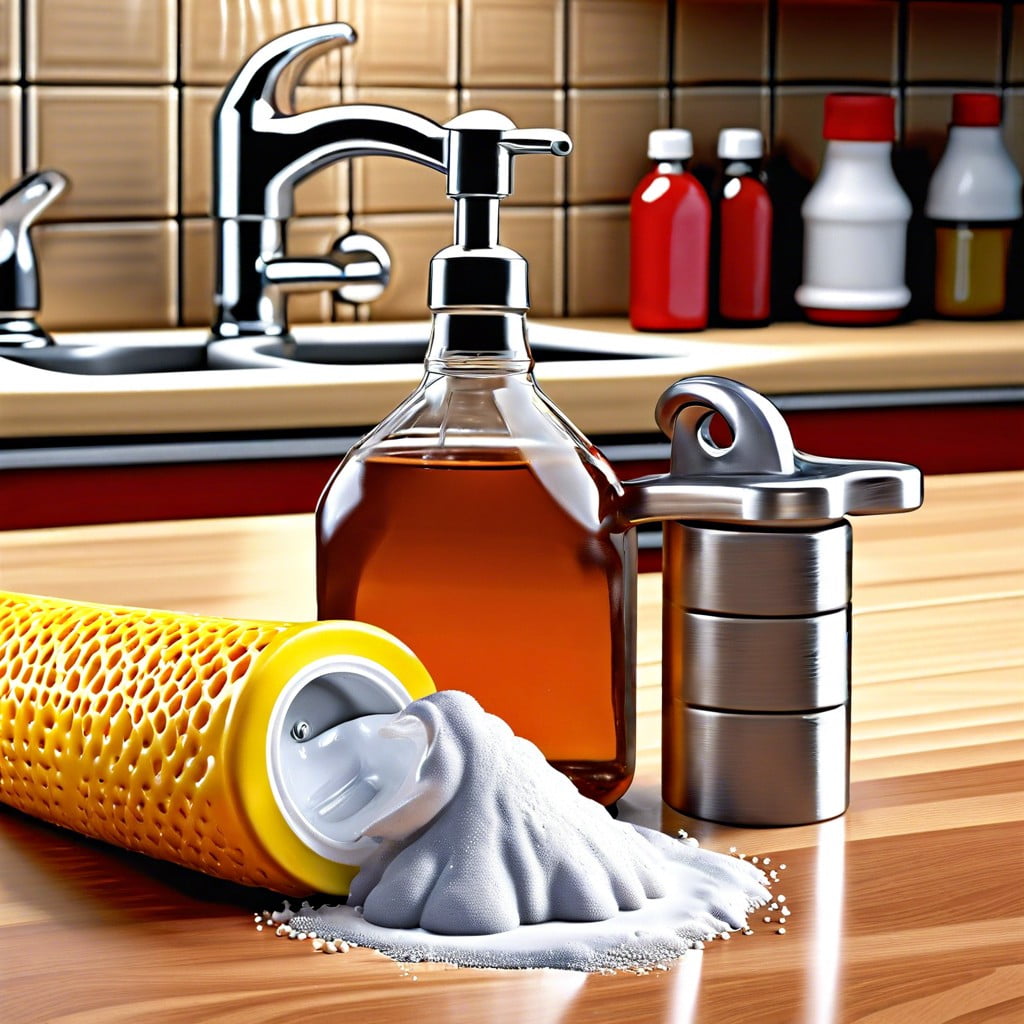Last updated on
Indulge in the rich hues and cozy vibes of autumn through art because this season’s exceptional beauty deserves to be captured creatively on canvas.
Embrace the autumn season with a burst of creativity and artistic flair! This article is a treasure trove of fall drawing ideas, filled with inspiration from the vibrant colors and cozy vibes of this wonderful season.
From the fiery hues of falling leaves to the whimsical charm of pumpkins and scarecrows, there’s a multitude of themes waiting to be explored.
Whether you’re a seasoned artist or a beginner, these ideas will spark your imagination and guide you to create stunning fall-themed drawings.
Dive into the details to uncover a world of artistic possibilities this fall!
Pumpkin Patch
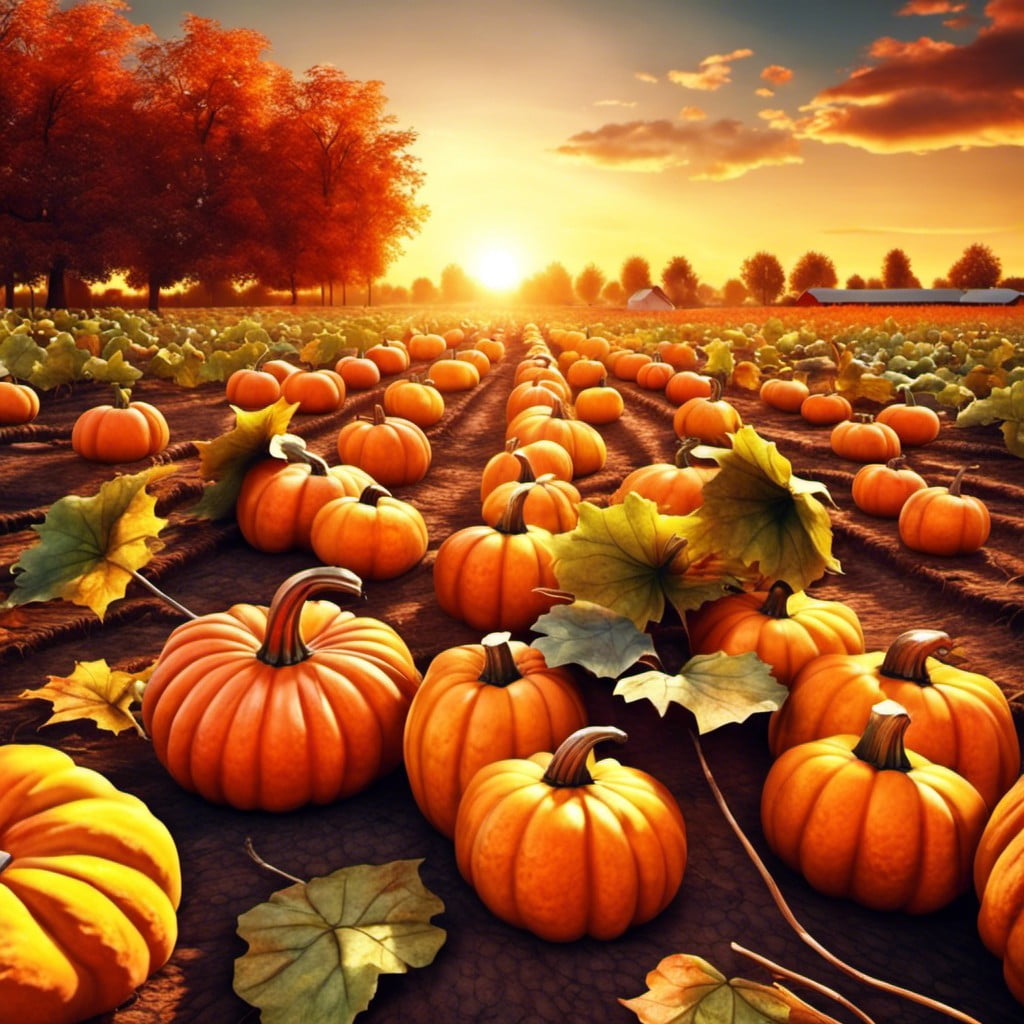
Using diverse oranges and yellows, start by drawing various sizes of pumpkins. Spaces in between, yet clustered together, create an authentic patch feel.
Accentuate the rounded forms with curved lines for added texture and depth. Add twisted vines connecting them, signifying their growth.
Next, create soil using irregular shapes and earth tones. Surround the patch with hints of vegetation and tall, slender stalks for the illusion of cornfield boundaries.
Ignite a feeling of comfort with a rustic wooden sign staked into the ground. You could write ‘Pumpkins for Sale’ or any phrase of your choice.
Lastly, setting an immersive scene, use a large harvest moon in the background casting a soft glow on your pumpkin patch. Bright stars sprinkled across the night sky enhance the magical harvest charm in the scene.
Maple Leaves
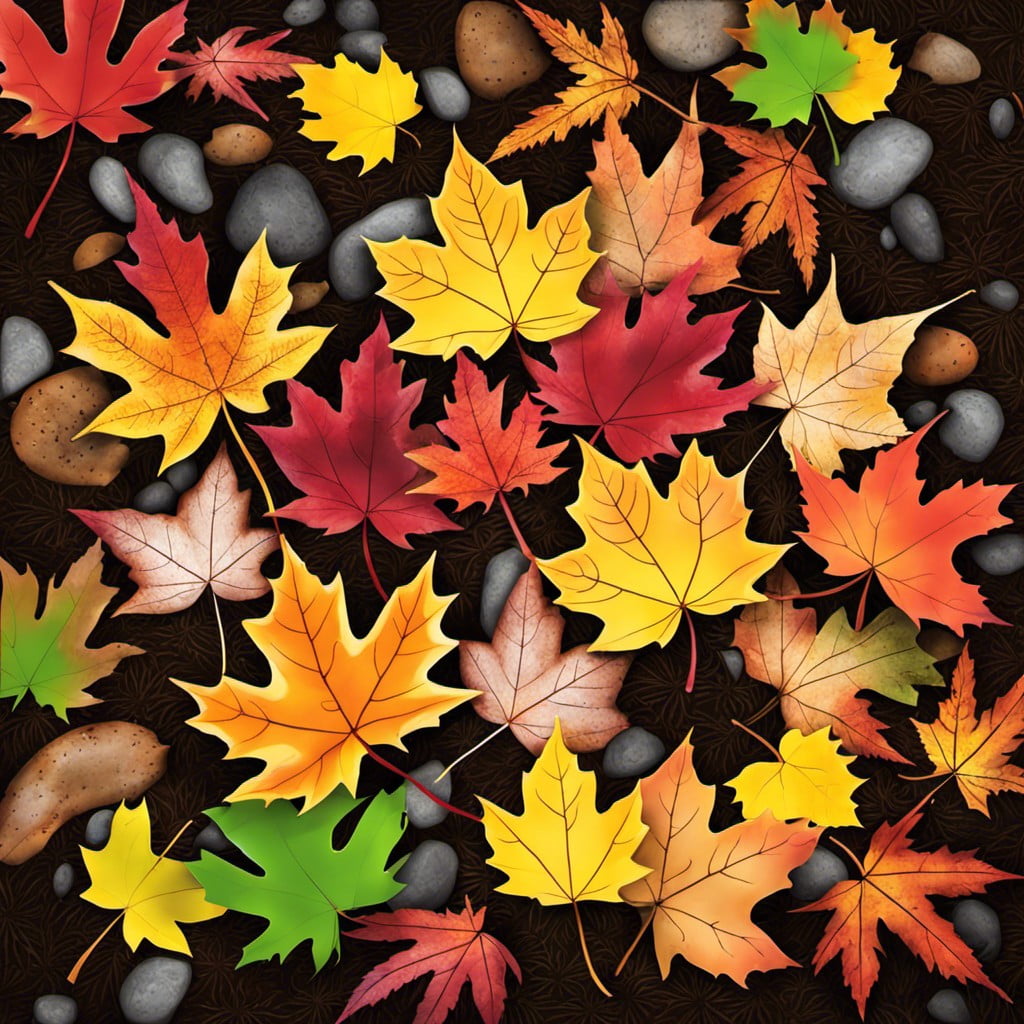
While maple leaves are ubiquitous in fall landscapes, their intricate details can make them a fascinating subject for your artwork. Consider focusing on:
- Color variation: As the green of summer fades, your rendering can incorporate vibrant hues of red, orange, and gold. Observe how the color variations within each leaf aren’t just striking but a dramatic portrayal of nature’s palette at work.
- Leaf anatomy: Do not limit yourself to the outer silhouette. Even the leaves’ veins carry a unique pattern. Drawing them meticulously will bring out the essence of the leaf, giving it depth and texture.
- Light and shadow: Depending on your viewpoint, light can change the leaf’s color and shadows play across its surface. This can create both contrast and depth, making your maple leaf drawing more three-dimensional.
Consider these small yet crucial details, and those maple leaves on paper will not just be illustrations but a reflection of fall’s splendor in its truest sense.
Scarecrow in a Field
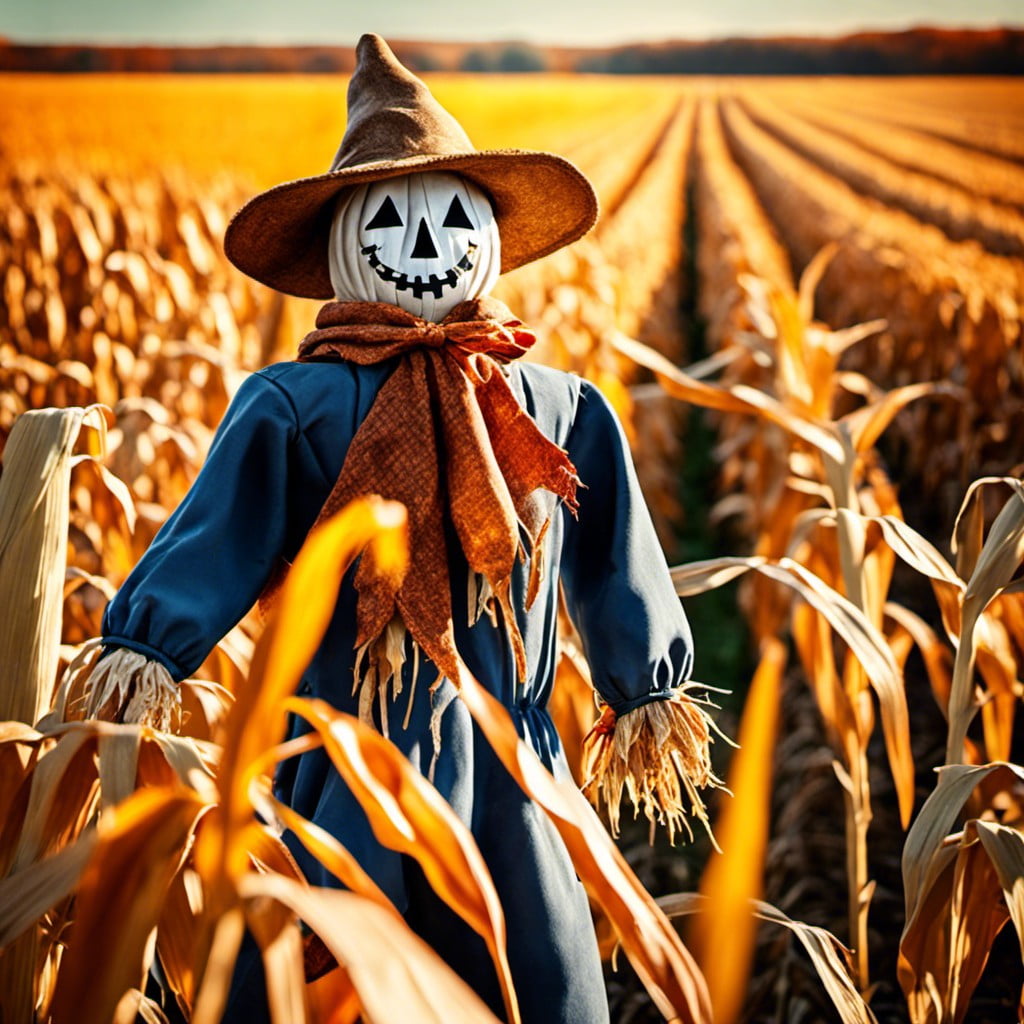
In your canvas, imagine a large, sprawling field ripe with harvest. At the center stands a lonesome scarecrow, the defender of the crop against pesky birds. Here are few key concepts to pin down:
1. The Scarecrow: Typically clothed in old, colorful attire, the scarecrow could be depicted with patchwork detailing and straw protruding from its sleeves and hem for a traditional look.
2. Towering Stalks: Illustrate the scarecrow’s surroundings with tall stalks of corn or wheat. This would emphasize its purpose and give the image a sense of depth and realism.
3. Setting: A field looks different throughout the day. Choose the setting wisely. Whether it’s a misty morning, afternoon, or enchanting twilight. The changes in light could affect the mood of the picture.
4. Birds: A few distant silhouettes of birds could further highlight the scarecrow’s role.
5. Landscape: Should the field stretch into infinity? Or should there be a farmhouse on the horizon? The background would affect the narrative of your drawing.
Remember, while accuracy can offer credibility to your artistry, creativity renders it unique. Have fun creating your scarecrow scene!
A Cozy Cabin With Chimney Smoke
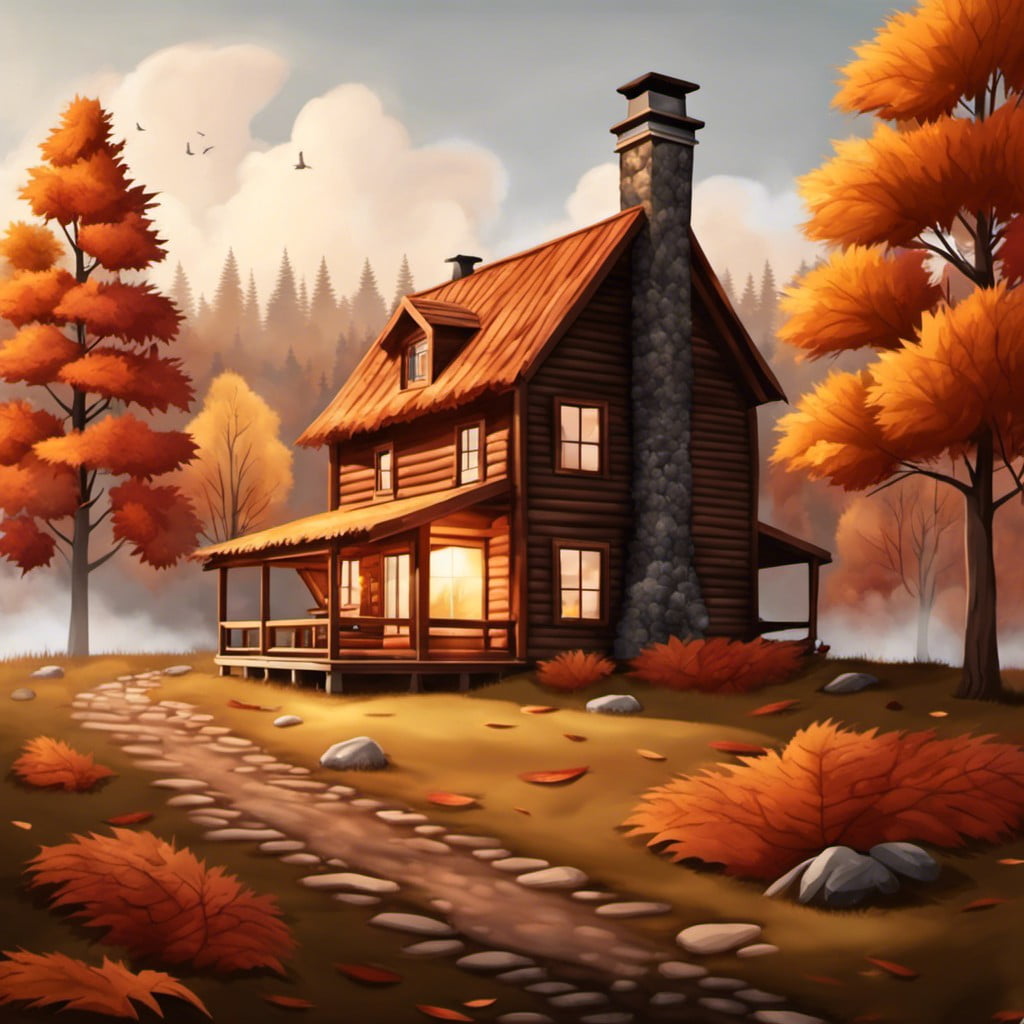
Capture the essence of autumn by drawing attention to a cabin’s intricate details. Showcase its warm essence by highlighting the wooden planks, perhaps a few with faded paint adding to the rustic charm. Render the roof with care, incorporating worn-out shingles and a sturdy-looking chimney.
A well-designed chimney is a must. Smoke should be illustrated rising steadily and gracefully. Consider using charcoal or soft pencil strokes to capture the translucent and wispy nature of the smoke.
Don’t forget the surroundings. Add towering pine trees and fallen leaves of vibrant hues in the background. A small woodpile and a glowing window can add to the feeling of coziness.
Accentuate cabin’s tantalizing warmth against the cool fall air. The key motif here is coziness, which should be reflected throughout your design. Remember, the cabin is more than a structure; it’s a symbol of comfort and warmth in the brisk autumn season.
Stack of Multicolored Fall Books
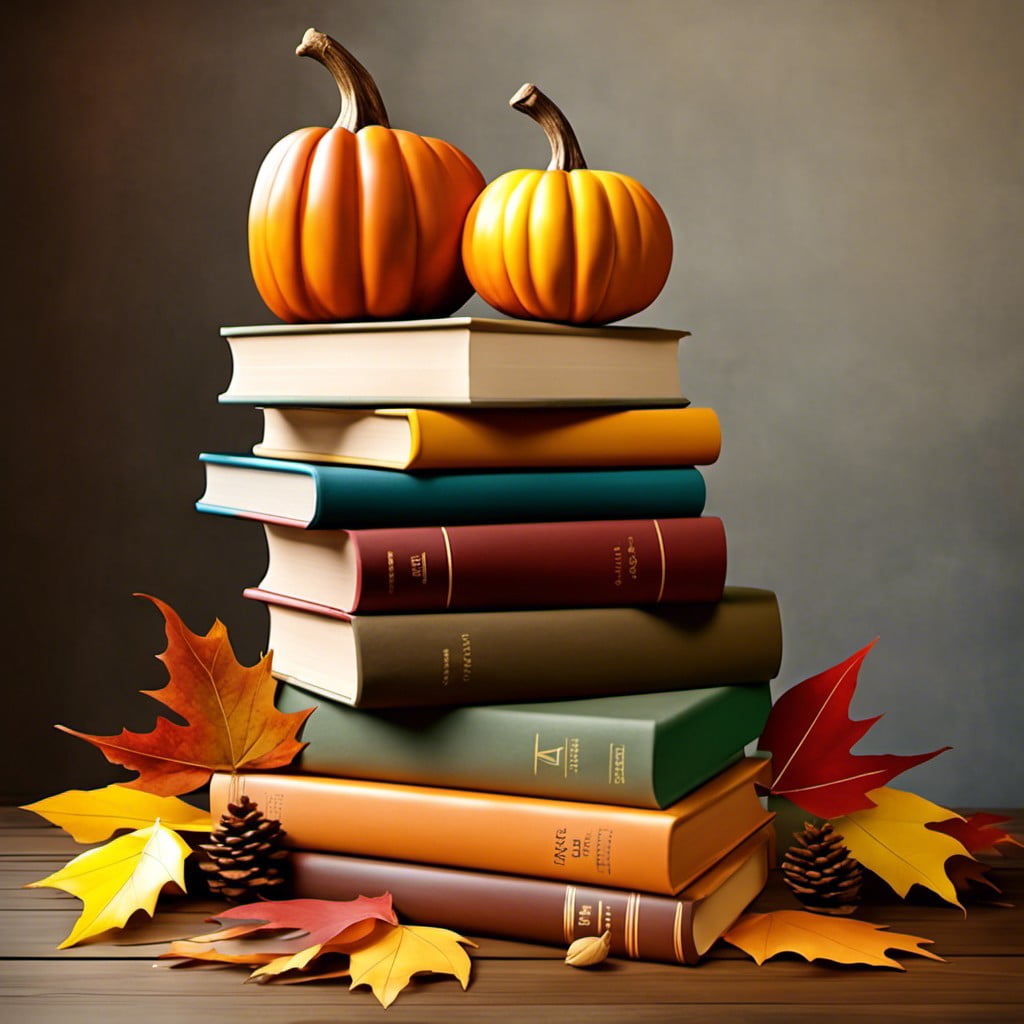
Infusing vibrancy into your fall-themed sketch, consider a variety of hues ranging from bright yellows to deep russets. These tones represent the distinct colors of autumn leaves which are an essential element in this drawing. Each book could depict a different shade, lending your artwork a multi-hued charm.
Delicate details, like the texture of the book covers or the frayed edges of used pages, add depth and bring the books to life in your drawing. If you’re feeling creative, lightly etch out patterns or insignias on the spines, this step isn’t necessary, but it animates your illustration with a personalized touch.
Remember, light and shadow play a key role in any drawing. For this one, envision a soft light source that casts gentle shades on certain parts of your stack. This will give your pile of books a three-dimensional look.
Finally, experiment with perspectives. A worm’s eye view can illustrate an impressive, towering stack of books, while a bird’s eye view can capture a unique topside vista. Express your artistic freedom by choosing a perspective that resonates with your style.
Take these concepts to heart and let them guide your pencil on the canvas to create a picturesque stack of autumn-hued books.
Acorn and Oak Leaves
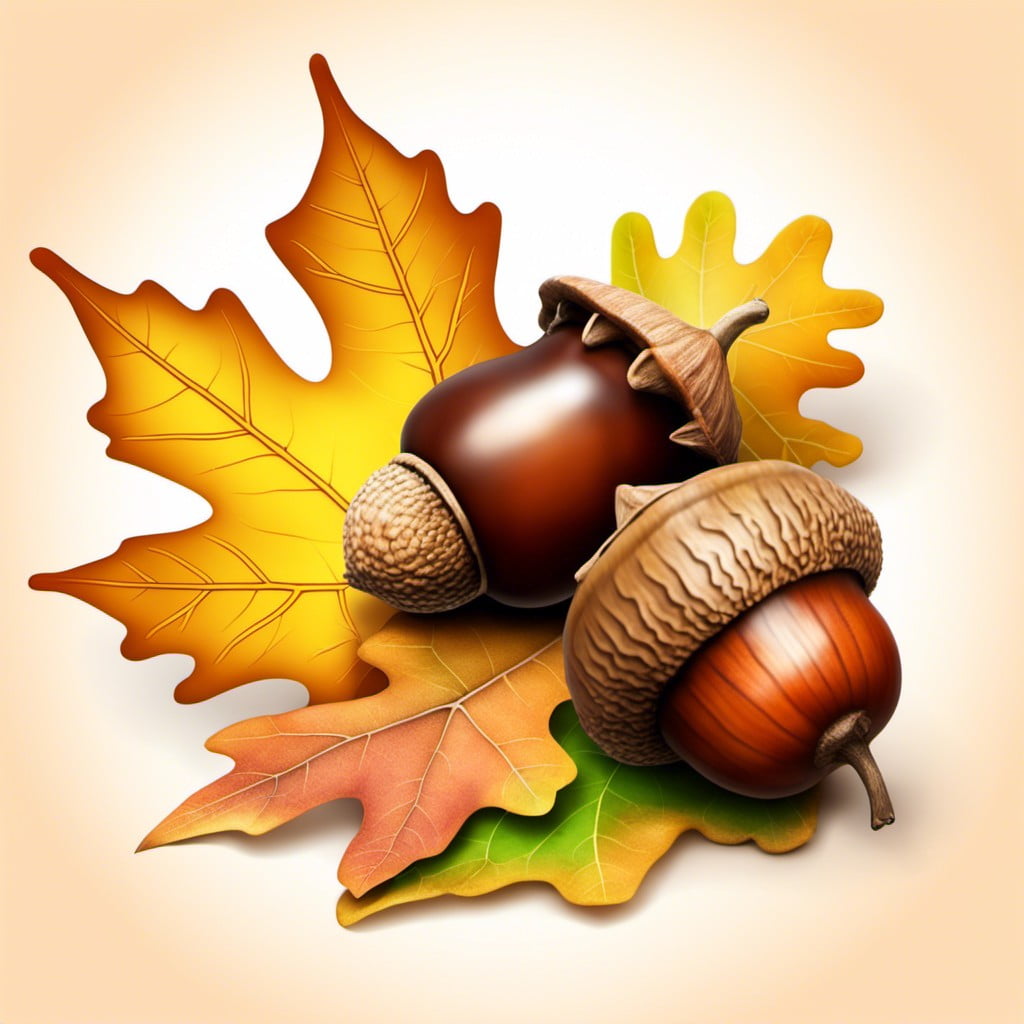
Exploring the shapes, textures, and colors presented by nature’s abundance, acorns and oak leaves present countless opportunities for artful creativity.
1. Study and sketch: Use references or go outside and observe acorns and oak leaves in different angles, learning about their shapes and shadows to get a realistic rendition.
2. Experiment with color: Bring in the rich hues of autumn – ochre, rusty oranges, and varying shades of brown. This allows for depth and brings your sketches to life.
3. Play with technique: Try out cross-hatching or stippling to shade in your acorn and leaf sketch; this adds depth and perspective that can accentuate your drawings.
4. Add a surprise element: You could add a squirrel or a small bird interacting with the acorns and leaves to bring energy and movement to your artwork.
5. Composition is key: Remember, acorns and leaves don’t always have to be the focal point, they can also be adeptly used as background elements to highlight your main subject.
By keeping these points in mind, your fall artwork will give you ample room for experimentation, while capturing the wonderful intricacies of autumn’s beauty.
Fall Themed Mandala
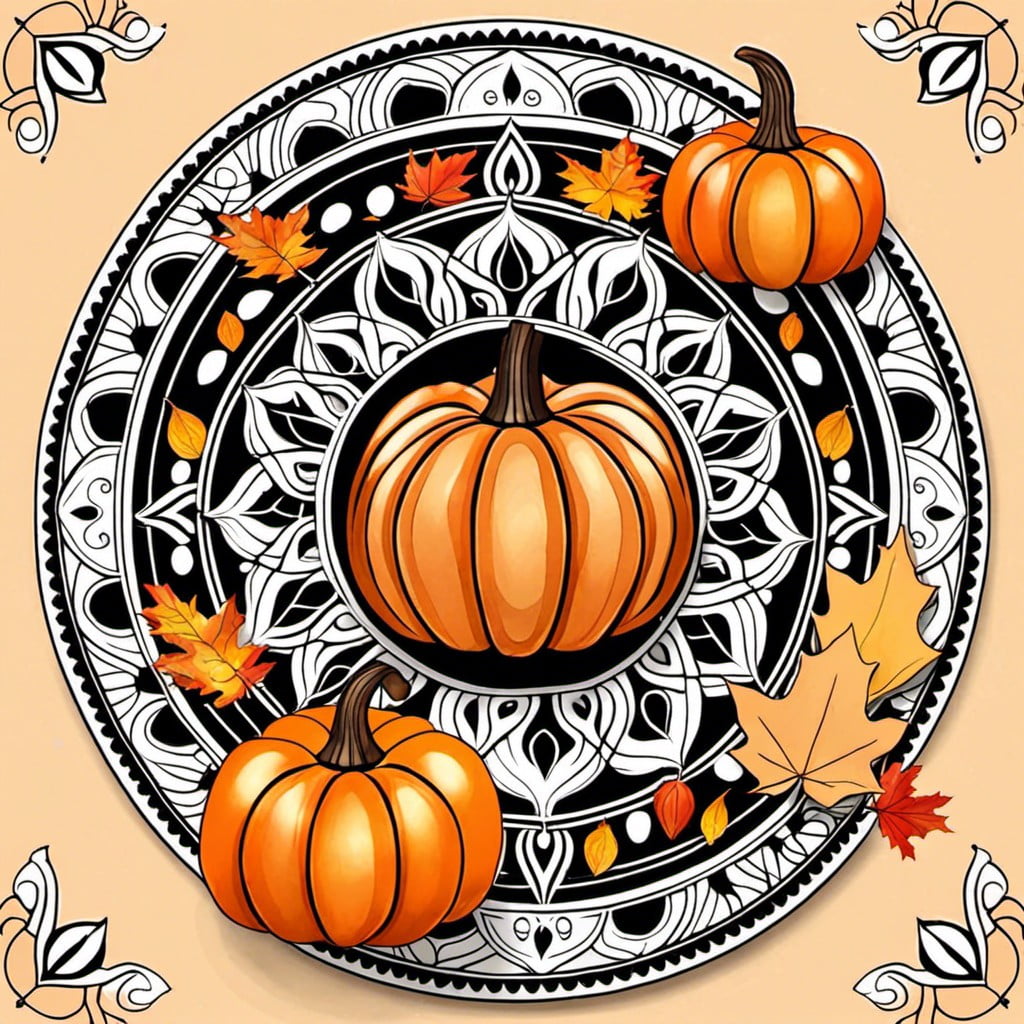
Creating a fall-themed mandala intertwines the relaxation of mandala art with the warm, vibrant hues of autumn. Here are some steps to keep in mind when drafting your mandala:
1. Use natural elements: Incorporate leaf motifs, pumpkins, acorns or anything that symbolizes autumn in your routine. These will add a unique fall touch to your mandala.
2. Play with warm colors: Reflect the fall palette – burnt oranges, browns, yellows, and reds.
3. Create layers: Through concentric circles or other geometric patterns, ensure depth and complexity.
4. Focus on symmetry: Balance is key across all mandala designs, making them visually appealing.
5. Add texture: Use shading or try different stroke intensities to create a dynamic piece.
Remember, the process is as essential as the outcome, so incorporate mindful meditation as you draw each line and shape, immersing yourself in autumn’s spirit.
Cup of Hot Apple Cider
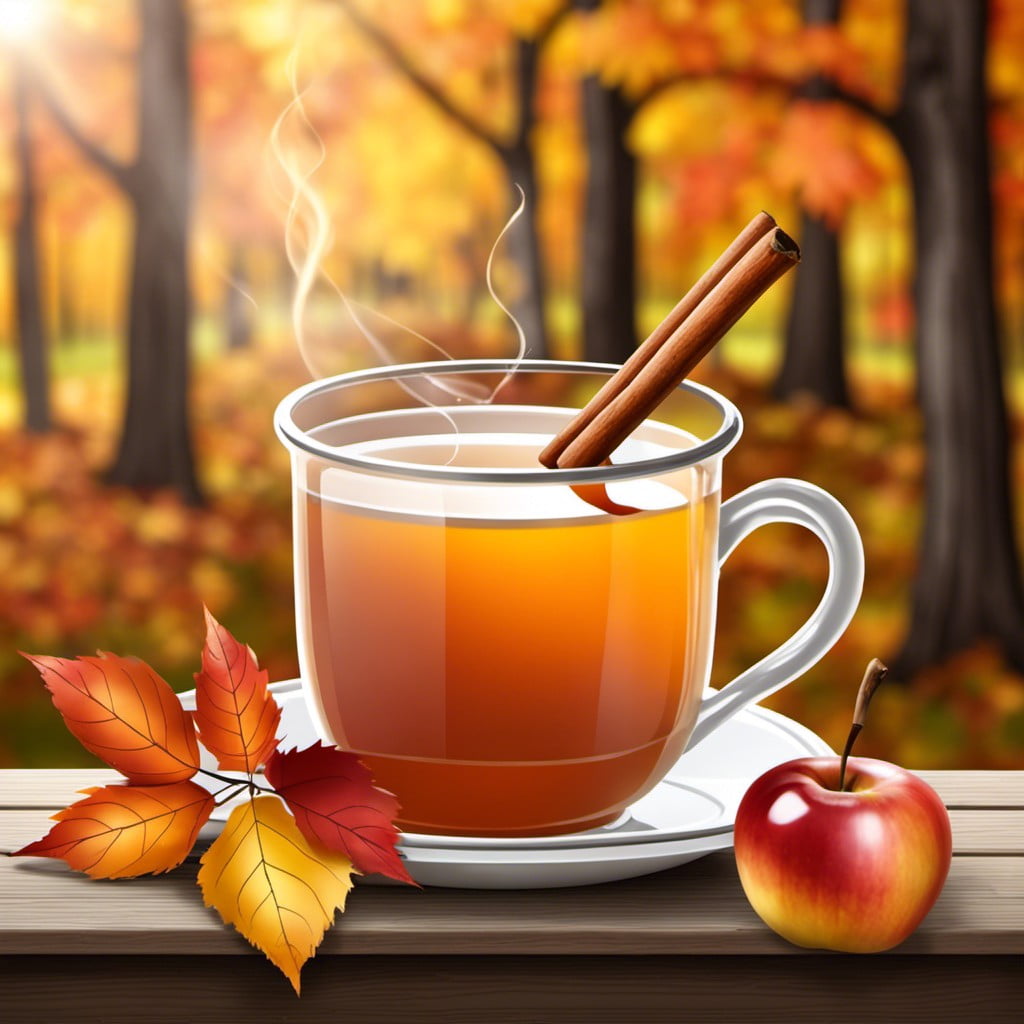
Continuing into our fall-themed drawing journey, explore the warmth and comfort that exudes from this particular idea. Imagine the enticing aroma, the rich, amber color, and the swirls of steam rising from the hot beverage.
1. Start with a curvy outline for the cup, cozy enough to almost express the warmth.
2. Sketch lightly a half an apple lean against the mug which serves as a fantastic identifier of the cider.
3. Capture the cider’s radiant, golden hue with watercolors or colored pencils.
4. Use different shades of the same color to give a rounded 3D appearance to the cup.
5. The handle of the cup can be in the shape of a twig to extend the fall theme.
6. Paint or shade steam wafting from the brew, twist and twirl the lines for movement.
7. Use a darker shade around the rim to reflect the depth of the drink.
8. A cinnamon stick or a star anise in the cup would add a festive touch.
This particular illustration could be a fantastic complement to a kitchen scene or as a standalone piece that purely embraces the essence of fall.
Group of Squirrels Collecting Nuts
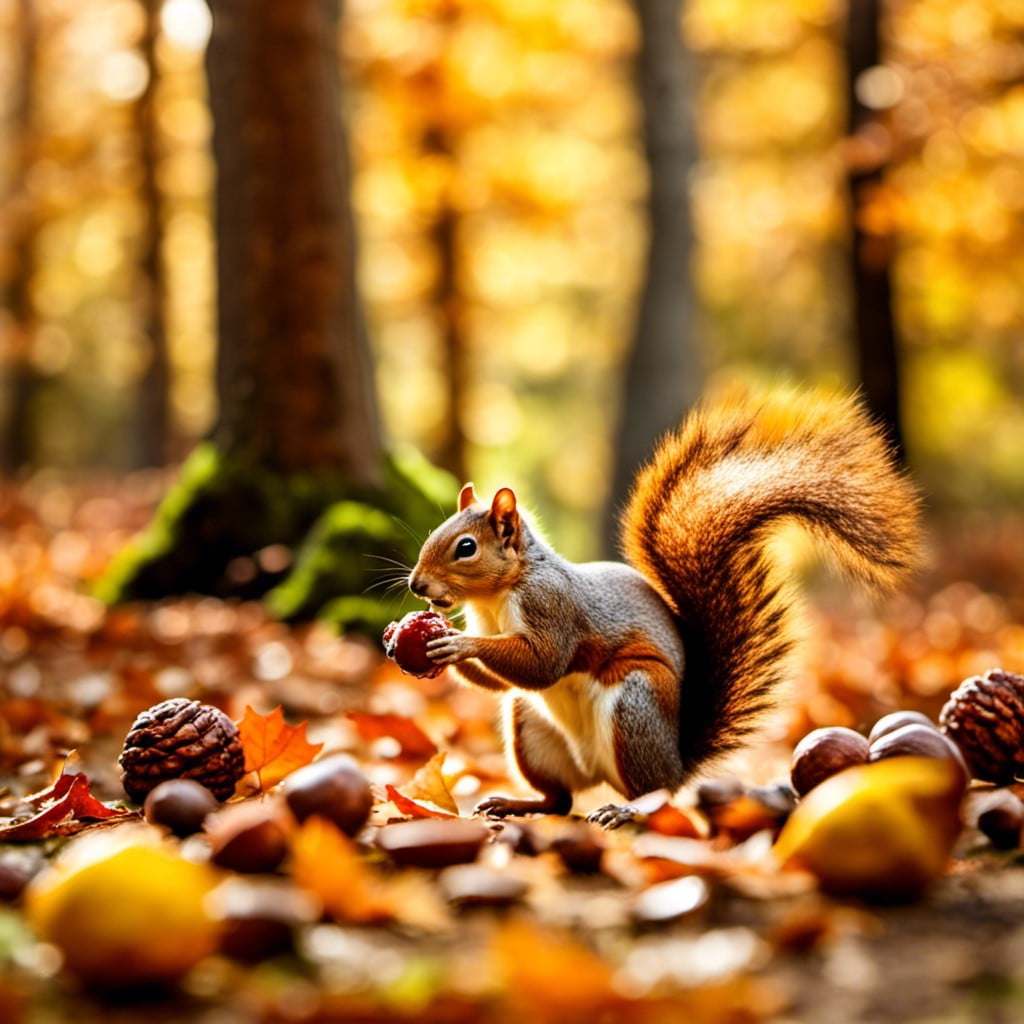
Drawing a playful rodent ensemble hard at work can add a whimsical touch to your fall artwork. Capture their lively spirit by painting a few fluffy, bushy-tailed squirrels scurrying about, gathering acorns for the winter. Here’s how to bring it to life:
1. Exhibit varying body positions to depict movement and activity. Some squirrels might be digging, while others might be climbing or scampering around.
2. Pay attention to their features. Delicate paws and bright eyes can help bring out their character.
3. Showcase the nuts. Display a variety of nuts in different stages – buried, half dug up, or held in the tiny paws.
4. Use a broad palette. Beige, brown, and grey for the squirrels, contrasted with various hues of rounded, textured acorns.
5. Give a hint of a setting without focusing on the background. A couple of trees or a mound of soil can denote a park or forest location.
Remember, the charm is in capturing the energy and industry of the scene within a few strokes. Happy sketching!
Cornucopia With Fruits and Vegetables
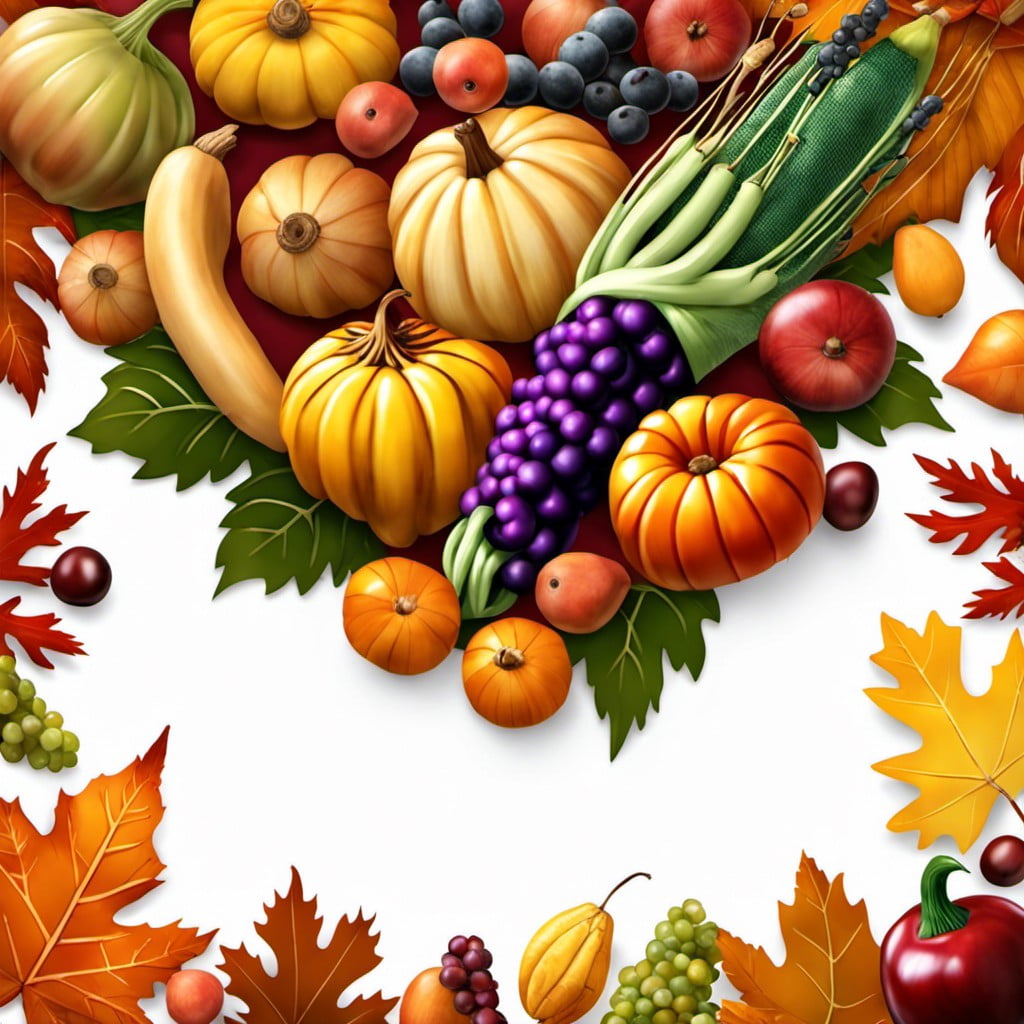
Celebrate the spirit of the season with a bountiful illustration that’s straight from nature’s pantry. Think of visually appealing fruits, vegetables, and late-harvest greens. A cornucopia reflects those elements of fall beautifully and adding some details can help your drawing look even more lively.
1. Start with the Horn: sketched as a large, hollow, and slightly curved element.
2. Fill the Horn: Draw apples, grapes, pears, pumpkins, and corn peeking from the mouth of the horn.
3. Add Greens: Scatter different types of leaves.
4. Add Details: Texture your fruits and vegetables. Show the grain on the corn, bumps on the pumpkin, etc.
5. Shade and Color: Use warm autumn hues to bring your drawing to life.
Remember, the more variety in the fruits and vegetables, the richer your cornucopia will look. Happy sketching!
A Spooky Halloween Scene
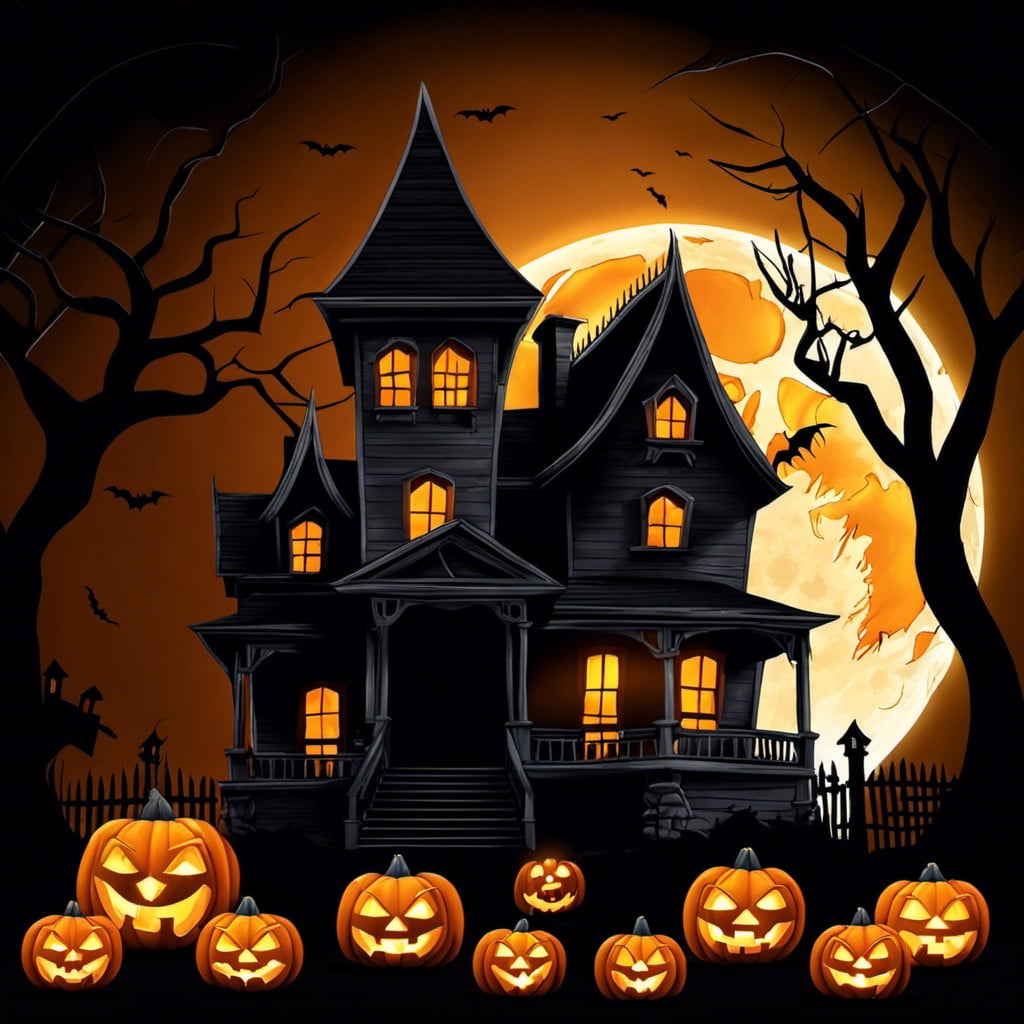
Imagine a dilapidated mansion at the end of an overgrown pathway, complete with cobwebs covering the upper windows. Bats silhouette against a full moon while a lone owl perches on a weathered wooden fence. Jack-o-lanterns throw eerie shadows against gnarled trees entwined with creeping ivy. The air is filled with a hazy fog, making everything seem unreal, like stepping into a different world.
1. Utilize light and shade to give depth to the spooky elements such as the cobwebs and fog, and use dark shades for areas with less light to capture the eerie atmosphere.
2. The owl on the fence and bats against the moon add a sense of life to the scene. Pay attention to the wing details to make them appear realistic.
3. The craggy bark of the trees and gnarled roots add an ominous touch to the landscape. Don’t forget to add shadows to create a three-dimensional effect.
4. Emphasis on both the full moon and the jack-o-lanterns. Use glowing colors for the light sources to replicate the mysterious mood of Halloween.
Remember that the key is to channel a sense of mystery and thrill while keeping it fun.
Luxurious Fall Fashion
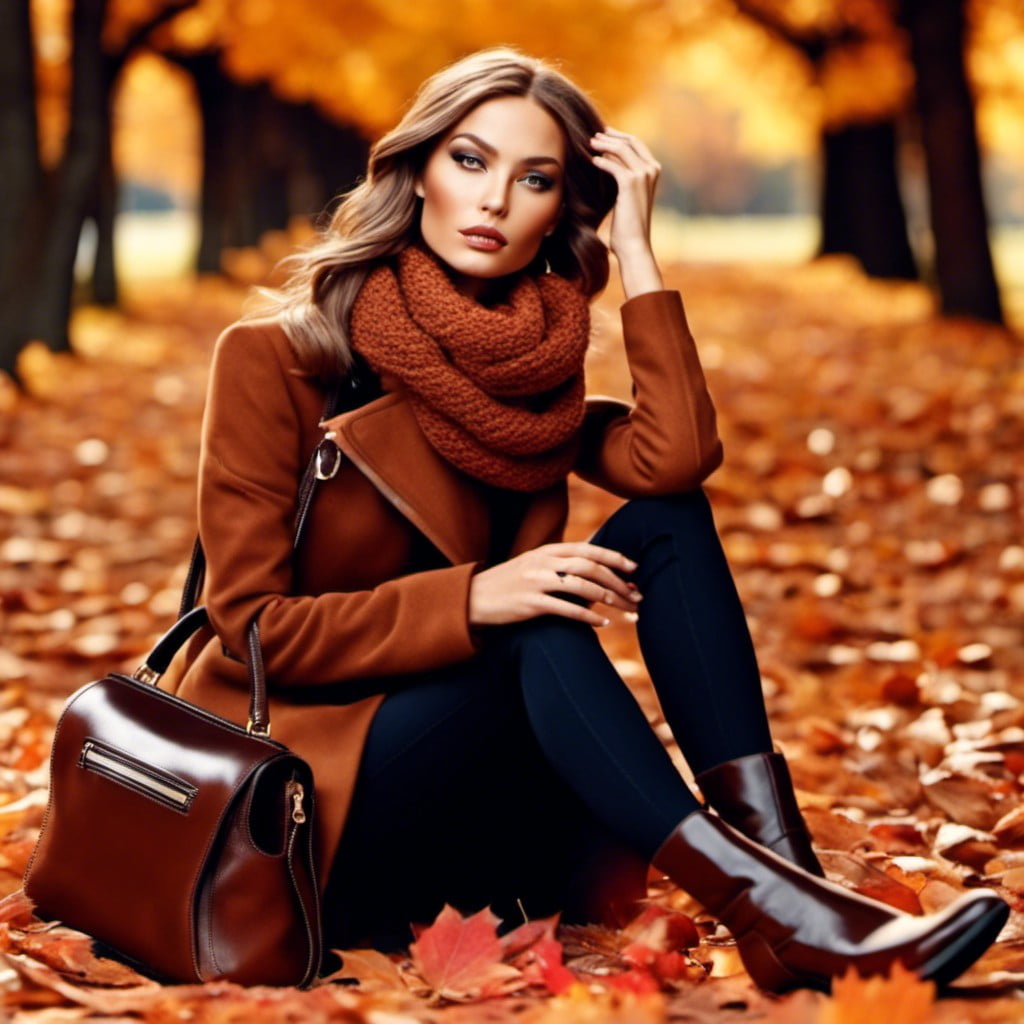
Venture into the realm of tweed jackets, cashmere sweaters, and knee-high leather boots. The crisper temperatures call for layering – think turtlenecks under blazers. Play with textures and colors: corduroy pants in burnt orange, a burgundy velvet dress, a forest green woolen scarf. In accessories, brooches infuse renewal into your wardrobe. Silken scarves, berets, and leather gloves add French chic. Consider patterns – plaid or houndstooth, and don’t shy away from metallic tones for a little glamour. Infuse your outfits with a luxuriant golden brocade or a touch of bronze. Remember, autumn fashion is about warmth and sophistication, blending comfort with style.
Bountiful Harvest Under a Full Moon
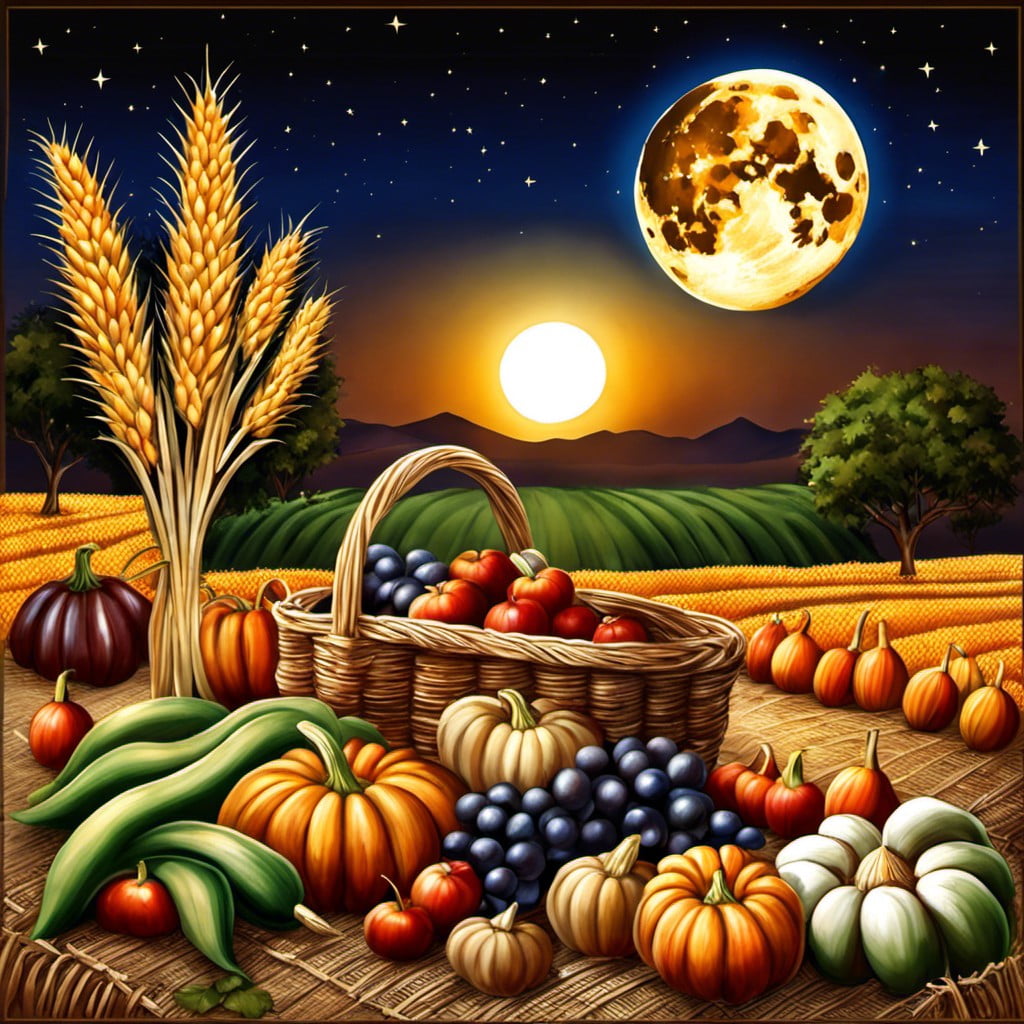
Incorporate a diverse array of hues synonymous with plentiful produce for this depiction. The radiant yellow of corn cobs, deep orange of pumpkins, and contrasting green pear could create an amazingly vibrant palette.
The scene provides a grand display of the autumnal harvest, emphasizing the season’s ability to foster growth and sustenance.
Take a note of the nocturnal illumination: the full moon. Cast a cool silver light across your canvas, effectively capturing the mystique and serenity associated with autumn evenings.
Shadows will play a crucial role in adding depth and a touch of mystique to your scenery.
Also, consider adding details such as a scarecrow or vintage tractor to enhance the farm atmosphere.
The mixing of cool moonlight tones and warm earthy fruit colors would certainly bring out the beauty of this seasonal spectacle.
Autumn Sunset At the Park
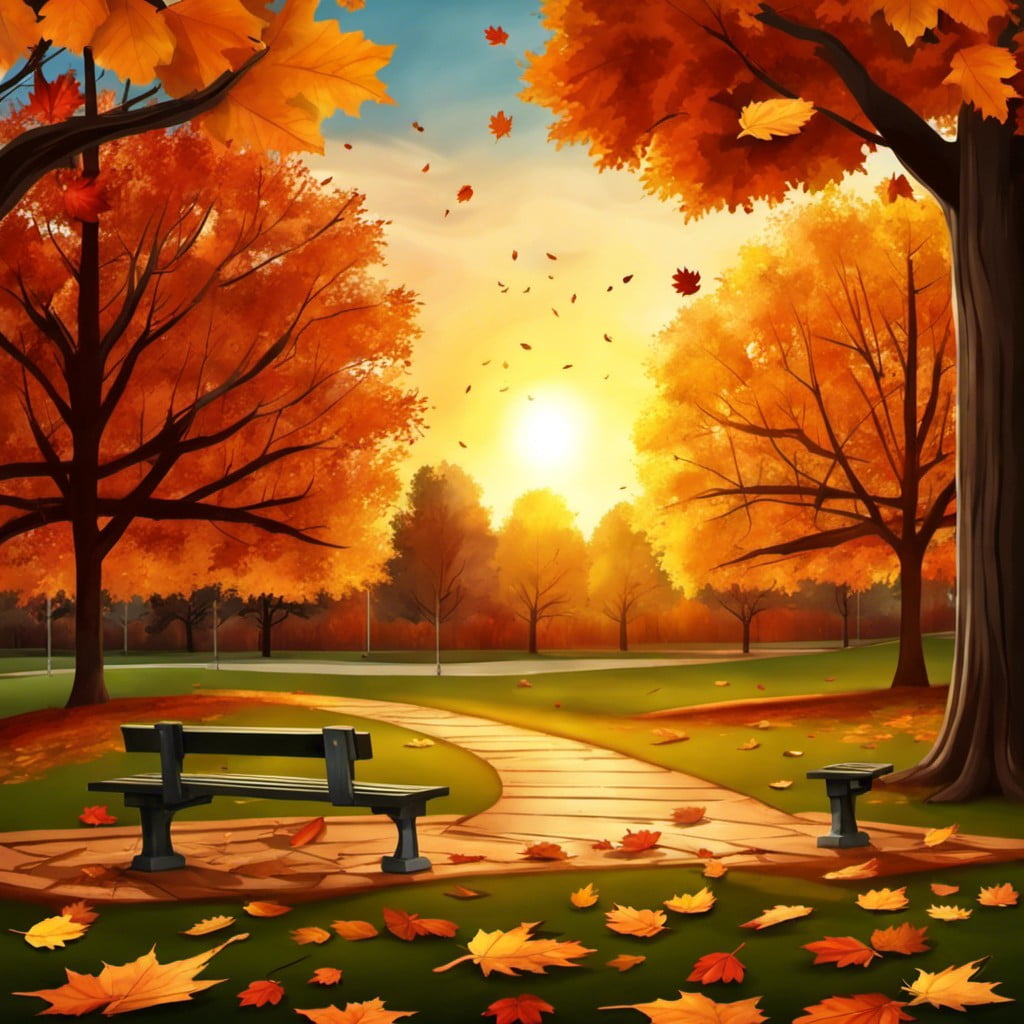
When it comes to capturing the essence of this subject matter, focus on the beautiful transformation that nature undergoes during sunset. Make sure to encompass the myriad of colors that tint the evening sky – from hues of orange and red to gradients of pink and purple, creating a warm glow that illuminates the park. The silhouette of the bare trees against the tinged sky amplifies the serenity.
Sketched leaves swirling in the slight evening breeze, a gentle reminder of the season. Light reflecting off the quiet stream adds a unique charm. The park visitors may serve as important details too, families enjoying picnics, dogs chasing frisbees, or joggers on the trail.
Take into account shadows and perspective, emphasizing depth. Layer shades to create a realistic depiction of light fading. Remember, the idea is not to rush into finishing the piece, but rather to savor the process. It’s about immersing oneself in the tranquillity and vibrancy of an Autumn sunset at the park, and translating it onto paper.
Football Game in Action

With sketchbook in hand, capture the dynamic movement and energy of the game. Focus on details like the athleticism of the players, the intensity of the crowd, and the layout of the field to give the picture life.
Incorporate the distinctive features that make football unique. Here a few strategic points to make:
- 1. Show players in mid-action: This gives a sense of motion. Perhaps a quarterback preparing to make a powerful throw, or a receiver in mid-air about to catch the ball would do the trick.
- 2. Illustrate the crowd: Show the audience’s enthusiasm. Let their expressions reflect the tension and passion attached to the game.
- 3. Capture the Atmosphere: Try to incorporate the weather, be it the crisp fall air or a light drizzle. Fall weather significantly adds to the overall ambiance.
- 4. Position and Perspective: Attempt different angles and perspectives, from a wide view of the field to a close-up of a helmet.
- 5. Depict the Gear: Football gear is distinct and iconic. Show the players clad in helmets, and shoulder pads. Don’t forget the game’s centerpiece, the football itself.
Remember, the key is to keep the drawing lively and action-packed. Just like a real football game in the heart of fall.
Forest Path Covered in Dried Leaves
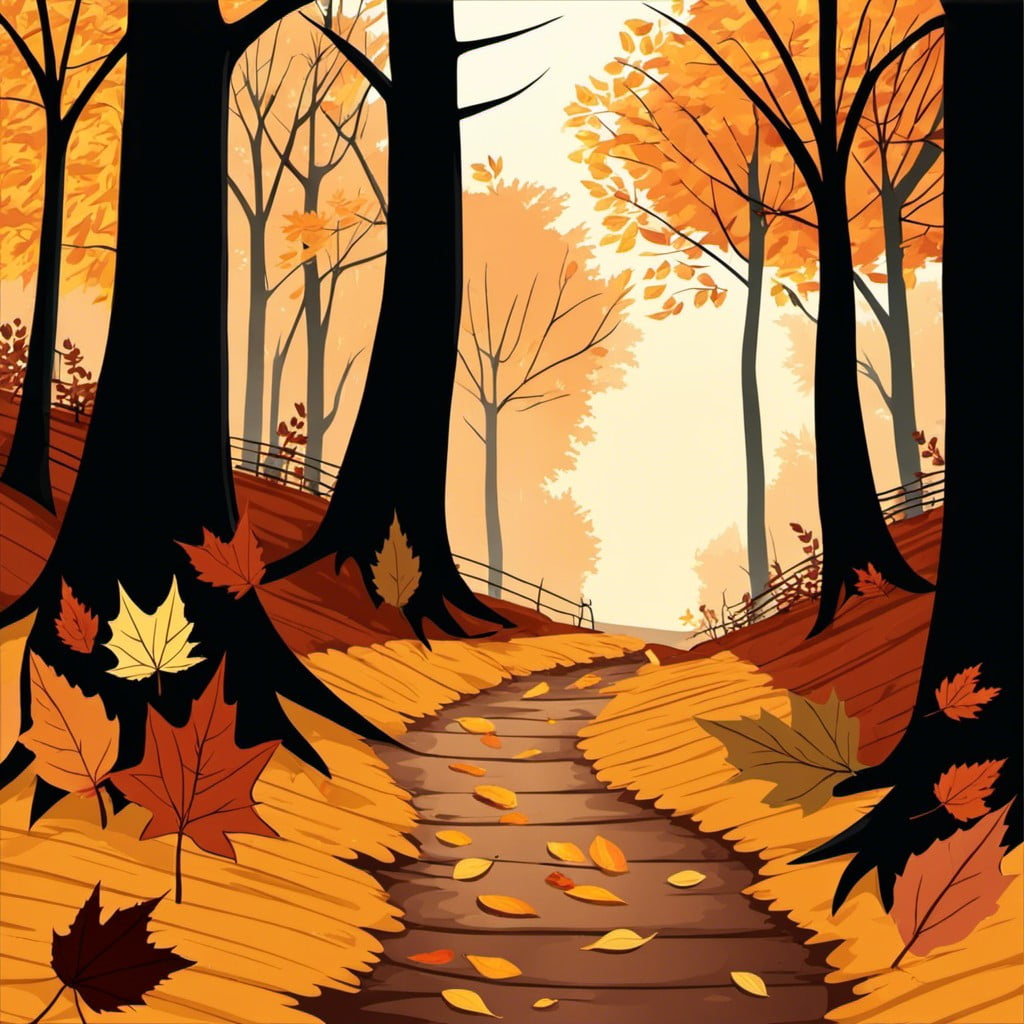
Capture the mystical allure of wooded trails in autumn with their carpet of crunchy, russet-hued foliage. Pay attention to the intricate textures of the leaves, each veined pattern telling its unique story of seasonal change.
Don’t forget to emphasis on the diversity of shapes, with oaks, maples, and birches offering a veritable playlist of forms to explore.
Use a blend of warm earth tones — rustic reds, golden yellows, burnt oranges and deep browns to convey the coziness of the season. Observe the way shadows cast intrigue between the trees, and how patches of light sparkle on the leaves strewn pathway.
Adding a perspective can deepen the narrative, perhaps hinting at a hidden path meandering into the forest’s secretive depths — leaving the viewer pondering its destination.
Finally, capture nature’s sounds within your artwork–the whisper of the wind through the trees, the crunch of leaves underfoot. Through these subtle sensory touches, your drawing can transport viewers right into the heart of a serene, autumn-splashed forest.
Witch’s Brew and Magic
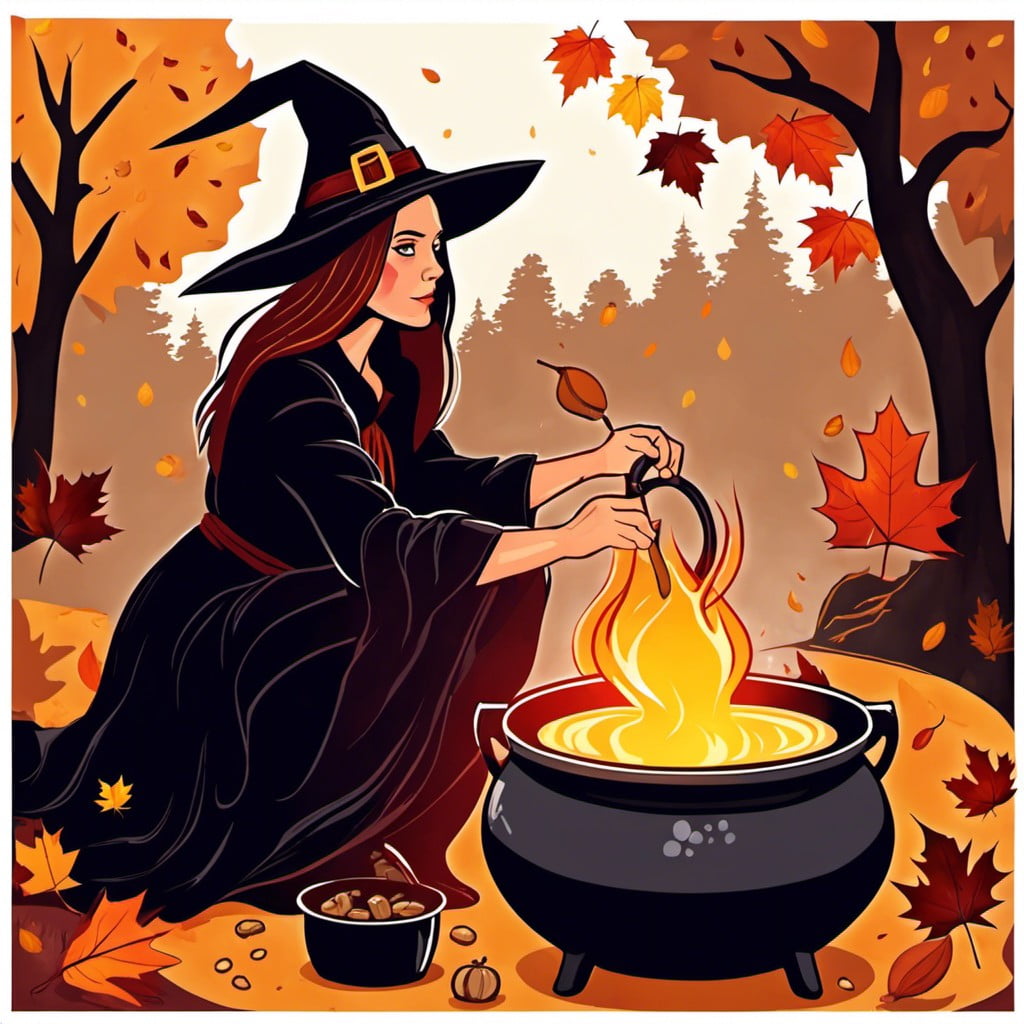
Embracing the mystical allure of autumn, there is a captivating charm in creating an enchanting witch’s brew scene. This could involve a cauldron bubbling with a vibrant potion, a magical broom or book of spells nearby, set against a moonlit backdrop. Remember to give the setting an atmospheric touch – make use of dark and warm colors to capture the eerie but engaging essence of witchcraft.
Here are some concepts to understand for this drawing:
- Components: The brew, a cauldron, a book of spells, a broom.
- Use dark and warm colors: Reds, oranges, purples, and black can give the scene a mysterious allure.
- Atmosphere: Create a moonlit backdrop and play with lighting to add depth and drama.
- Details: Brooding trees, whispering winds, a fluttering raven can add hints of magic.
- Mysticism: Incorporate symbols or elements of witchcraft – runes, moon phases, crystals, or even magical pets.
Despite these tips, the true magic lies in giving your own creative twist to the theme. Let your imagination conjure magic onto the canvas!
Thanksgiving Dinner Spread
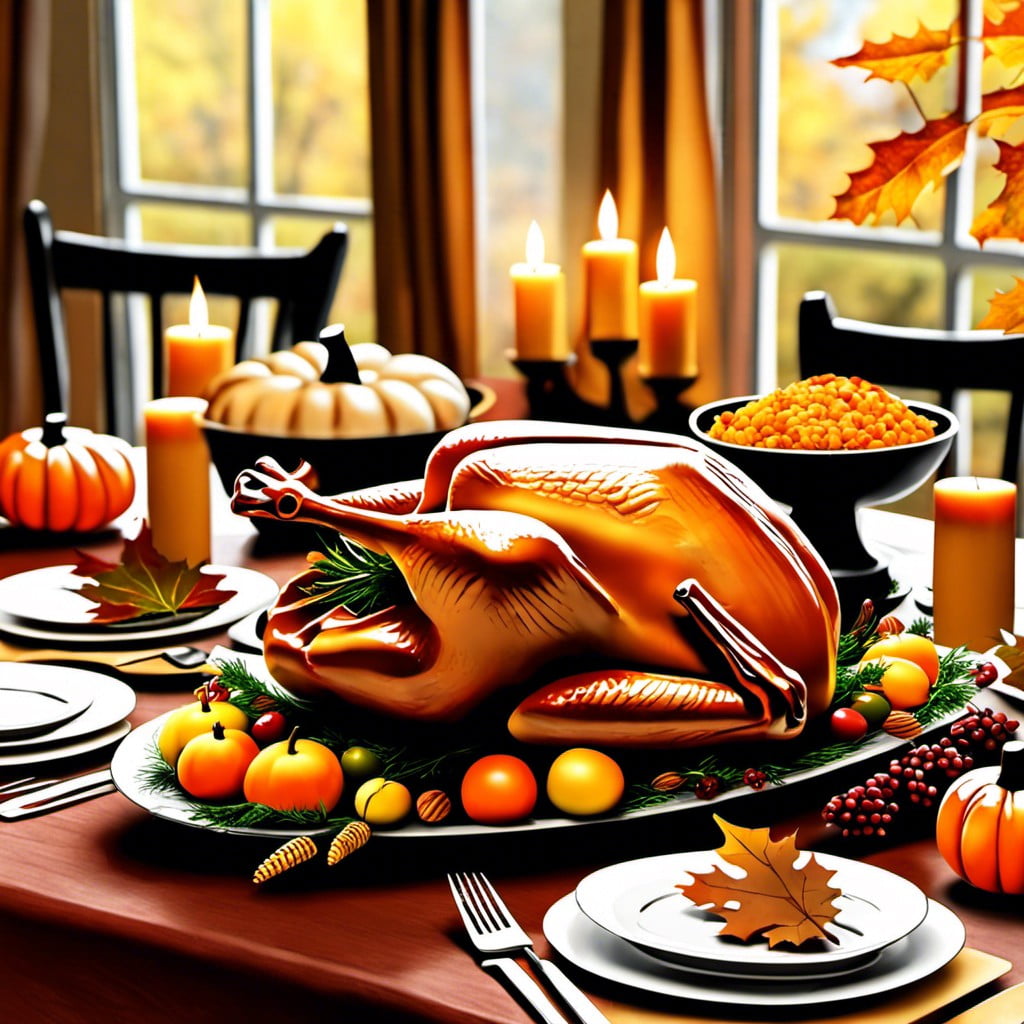
A classic turkey, golden and succulent, takes centre stage, surrounded by sides rich in colour and texture – cranberry sauce, mashed potatoes, green beans, and stuffing.
Complement this main ensemble with an array of pies – pumpkin, apple, pecan.
Think beyond typical food illustrations, introducing variety through visual textures and elements of the meal.
Sketch warm rolls in a basket, a bottle of wine, or a gravy boat.
The additions reflect the bounty of the season and are an essential part of the feast.
Remember, drawing invites the observer into the scene.
Have fun illustrating the glow of candles, shiny cutlery, or a vase of vibrant autumn flowers.
Consider the perspective, are you viewing it as a guest, a host, or from above?
Each viewpoint offers distinct elements to explore and brings a unique take on the holiday dinner spread.
Flannel and Boots By the Fireplace
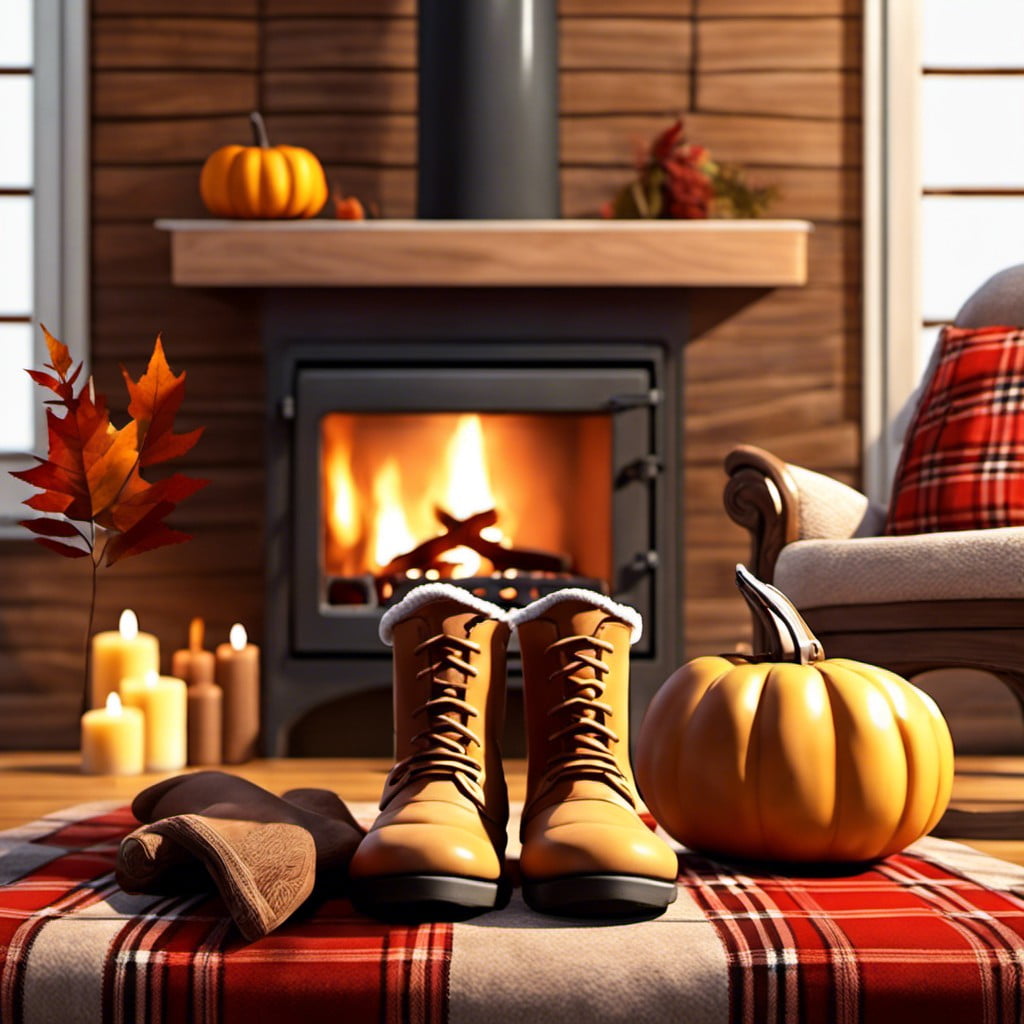
To create this cozy, autumn-themed drawing, consider the following tips.
1. Start with the scene’s focal point: the fireplace. Add details such as glowing embers or dancing flames to evoke a warm and comfy atmosphere.
2. Position the flannel shirt and boots strategically. They could be neatly placed next to each other or casually tossed as if just removed. Ensure their colors contrast beautifully with the room and fireplace.
3. Add textures. The flannel shirt should look soft and worn in, while the boots should appear sturdy and well-worn.
4. Utilize the right lighting. Make use of autumn’s soft, warm tones to emphasize the coziness of the scene. The glow from the fireplace should cast a warm hue on nearby objects.
5. Lastly, draw in some small details to bring the scene to life, such as a steaming mug of hot cocoa on the mantel or a well-thumbed book waiting to be picked up. Remember, every little detail will make your drawing more relatable and authentic.
Haunted House On a Hill
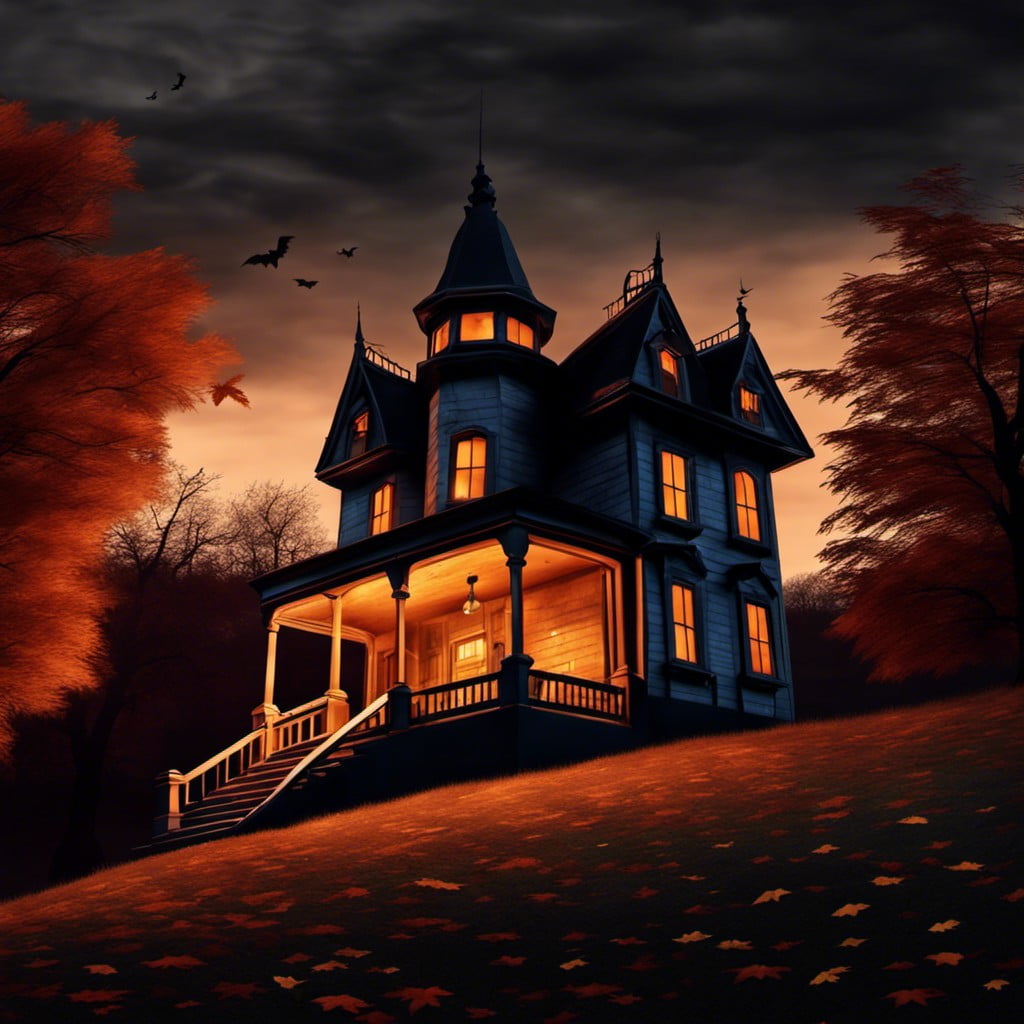
A combination of a nocturnal setting, an eerie hilltop location, and architecture reminiscent of classic horror movies sets the stage for this drawing. Here are some pointers to help bring this scene to life:
- 1. Incorporate a moonlit sky: A full moon or a crescent will add a dramatic, natural light to the scene.
- 2. Use shadows: Play with the location and intensity of lights to create a variety of spooky shadows.
- 3. Add cobwebs and broken windows: These are simple yet effective details to enhance the haunted aesthetic.
- 4. Include a lone tree: Subtly add to the ominous mood by sketching a barren tree near the house.
- 5. Insert a winding pathway: A pathway leading the viewer’s eye directly towards the house adds depth and complexity to the drawing.
- 6. Pepper in some bats or crows: A few strategically placed creatures of the night will compliment and animate the haunted theme.
Remember, the goal here is not to draw something frightening, but rather something which provokes a sense of mystery and intrigue.
Recap
